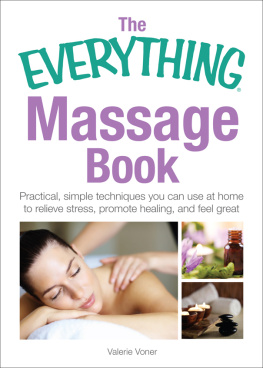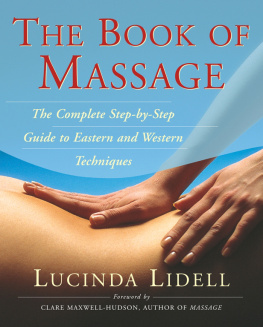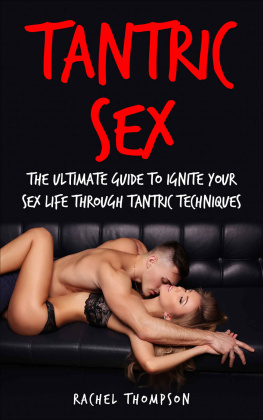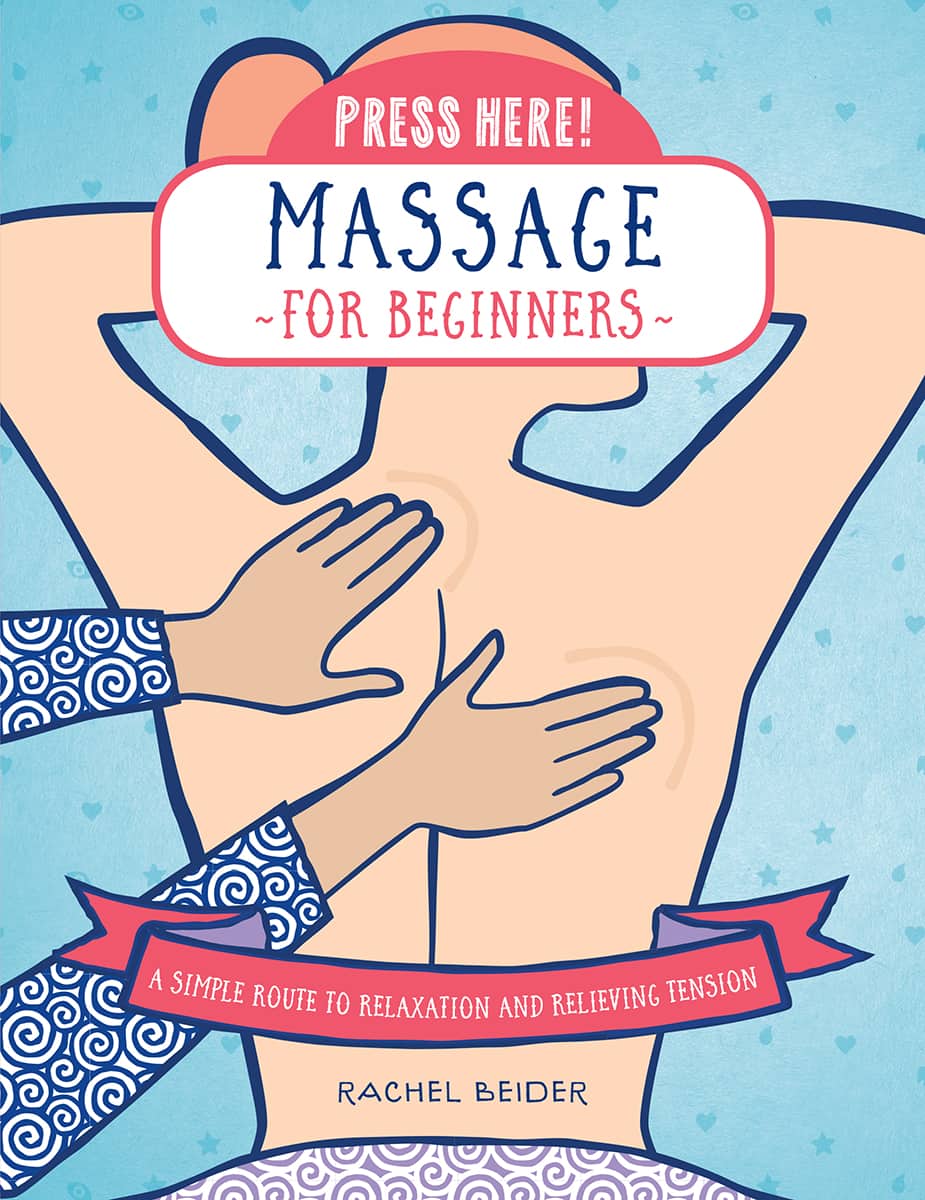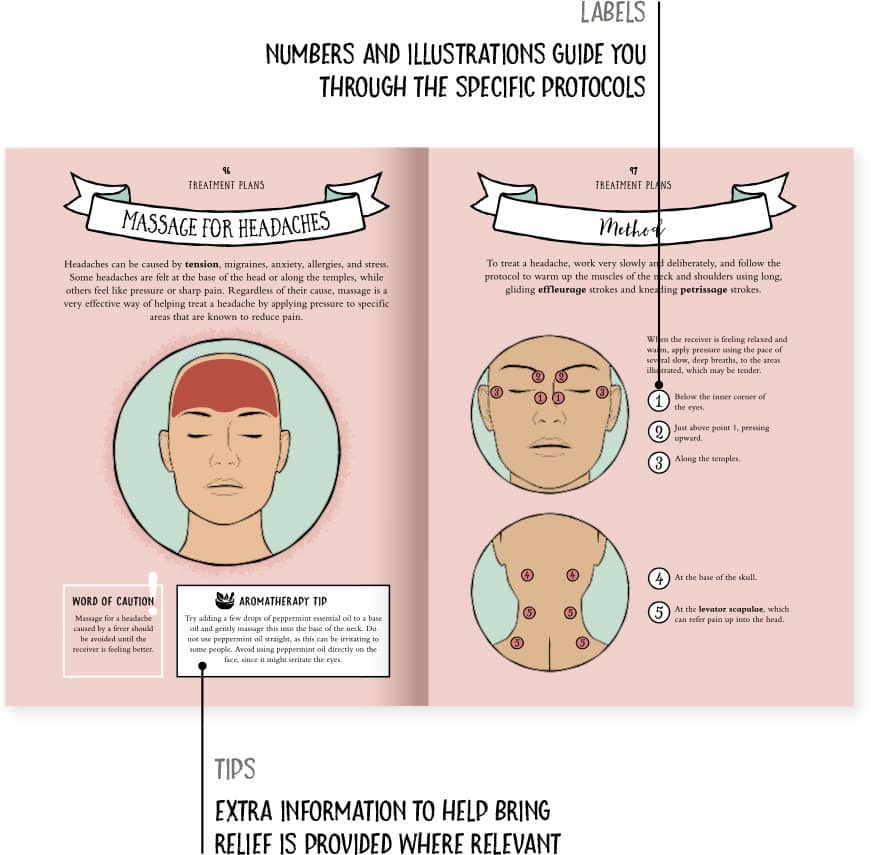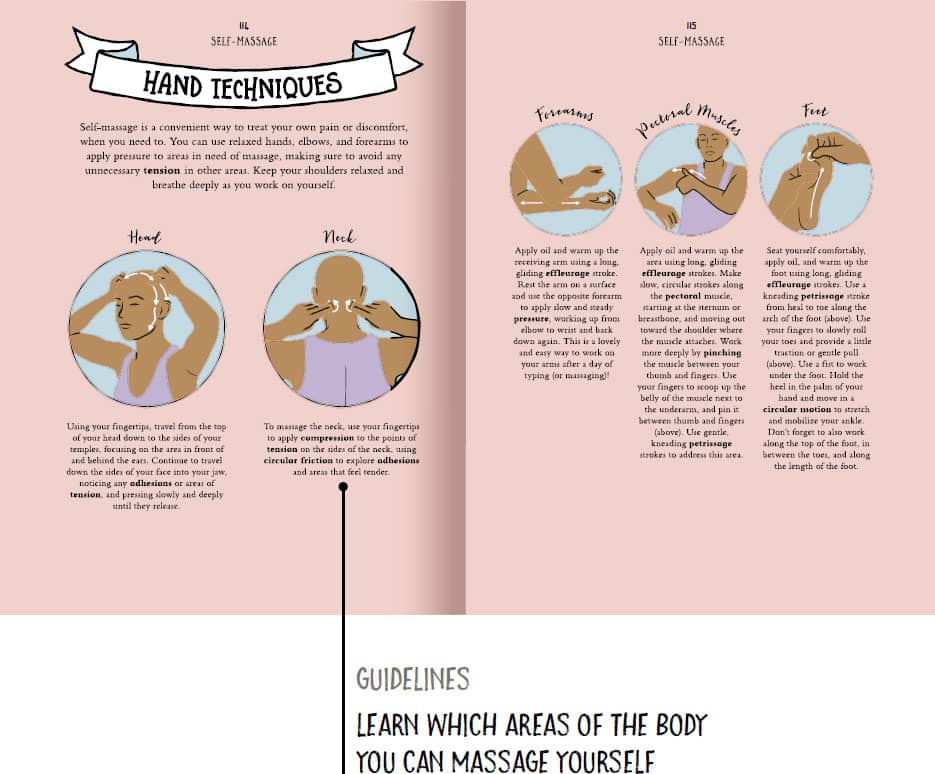INTRODUCTION
You can't stop the waves, but you can learn to swim.
JON KABAT ZINN
WELCOME
I HAVE ALWAYS BEEN INTERESTED IN MASSAGE THERAPY AS A WAY TO FEEL BETTER AND MORE CONNECTED WITH PEOPLE, AND I AM THRILLED TO BE ABLE TO SHARE MY KNOWLEDGE OF CLASSIC MASSAGE TECHNIQUES WITH YOU IN THIS BOOK.
THE MAGIC OF MASSAGE IS THAT IT CAN GUIDE A BODY TOWARD HEALING ITSELF. IT CAN HELP SOMEONE WHO IS SUFFERING TO FEEL BETTER THROUGHOUT THEIR HEALING PROCESS. MASSAGE BRINGS US BACK TO OURSELVES, REMINDING US TO LISTEN AND TO BREATHE, TO SLOW DOWN AND ACKNOWLEDGE PAIN AND TENSION, AND TO TAKE CARE OF OUR BODIES TENDERLY.
I GREW UP WITH SCOLIOSIS, AND REGULARLY EXPERIENCED THE FRUSTRATION AND STRESS OF CHRONIC PAIN. MY EARLIEST MEMORY OF MASSAGE IS OF MY MOTHER, A CLASSICALLY TRAINED PROFESSIONAL BALLERINA, WORKING ON MY SHOULDER PAIN USING KNEADING STROKES, WHICH GAVE ME SOME MUCH-NEEDED RELIEF. LATER, I WOULD GO ON TO TRADE BACK RUBS WITH FRIENDS, AND READ EVERY BOOK I COULD FIND ON THE SUBJECT OF MASSAGE.
I FIRST STUDIED MASSAGE FORMALLY IN THAILAND, BECOMING CERTIFIED IN THAI MASSAGE AT THE WAT PO SCHOOL IN BANGKOK. I IMMEDIATELY REALIZED THE BENEFITS AND JOY OF WORKING WITH MY HANDS AND WITH PEOPLE.
I CONTINUED MY EDUCATION AT THE SWEDISH INSTITUTE, AND BECAME LICENSED AS A MASSAGE THERAPIST IN NEW YORK, WHERE I PRACTICE TODAY. MY STUDIO COMBINES A MEDICALLY BASED MASSAGE PRACTICE WITH THE RELAXING ENVIRONMENT OF A HEALING SPACE, AND IT IS WONDERFUL PLACE TO BE: IT'S NOT WITH EVERY JOB THAT YOU GET TO BE THE BEST PART OF SOMEONE'S DAY, EVERY DAY.

RACHEL BEIDER
Disclaimer
THE INFORMATION PRESENTED IN THIS BOOK IS NOT INTENDED AS A SUBSTITUTE FOR TRAINING BY A LICENSED MASSAGE INSTRUCTOR. THE METHODOLOGIES AND PROTOCOL PRESENTED HERE SHOULD ONLY BE UTILIZED AS A GIFT TO THE READERS THEMSELVES AND TO THEIR LOVED ONES. IF YOU ARE INSPIRED BY WHAT YOU LEARN HERE, YOU ARE ENCOURAGED TO JOIN AN ACCREDITED MASSAGE THERAPY COURSE.
A BRIEF HISTORY OF MASSAGE
Ancient civilizations dating back over 5,000 years have used massage for its healing properties.
3000BCE
The earliest mentions of massage were from India, in Ayurvedic texts and in oral history as early as 3000BCE.
|
2700BCE
In China, ancient texts describing medical massage, called Amma, appear in approximately 2700BCE.
|
2500BCE
Egyptian tomb paintings of people thought to be practicing massage date back to 2500BCE, and Egyptians are credited with creating the practice of reflexology.
|
1000BCE
Japanese monks studying Buddhism in China brought massage back to Japan around 1000BCE, creating Shiatsu.
|
500BCE
Hippocrates prescribed friction massage around the 5th century BCE, to help heal injuries.
|
1800AD
Europe began recognizing massage and its benefits in the 18th century, when the Swedish physician P. H. Ling used massage therapy to treat and prevent injuries for his gymnastic movement practice, popularizing massage in the west and creating an awareness of Swedish massage, which is the focus of this book.
|
TODAY
In modern times, massage is used for stress reduction, relaxation, injury recovery, and to feel more connected and grounded.
THE BENEFITS OF MASSAGE
The benefits of massage are immeasurable, as they reach the physical body, mind, and spirit. As humans, the mindbody connection is extremely powerful. Theres no better way of accessing that connection than through physical touch, provided with dignity and respect. A better-feeling body leads to a better-feeling mind.
Practicing massage is a wonderful way to connect, to the receiver and to yourself. It builds trust and fosters a feeling of wellbeing for both the massage provider and the receiver in the work.

People seek out massage for many different reasons, including shoulder tension, back pain, joint stiffness, neck issues, jaw pain, headaches, sports injuries, arthritis, insomnia, carpal tunnel syndrome, menstrual cramps, fibromyalgia, and mood disorders such as anxiety and depression.

We know that any injury or issue is made significantly worse by stress, and massage is an excellent tool for stress reduction.

Massage is an important part of self-care, and works best when combined with a healthy regimen of stretching and strengthening exercises.
Massage Can Help to
RELIEVE PAIN
RELIEVE ANXIETY
REDUCE STRESS
REDUCE SYMPTOMS OF DEPRESSION
EASE MUSCLE TENSION
IMPROVE CIRCULATION
IMPROVE SLEEP
INCREASE RANGE OF MOTION
INCREASE FLEXIBILITY
FOSTER A FEELING OF BALANCE
FOSTER A SENSE OF CONNECTION
FOSTER A SENSE OF WELLBEING
ENCOURAGE DEEP RELAXATION
ABOUT THIS BOOK
This contemporary take on a traditional practice makes massage accessible to a new generation of readers.
Planning Your Session
SHOWN
Here you will learn about the types of strokes and how to apply them, as well as how to plan a session, from setting the mood to understanding what is happening beneath the fingertips.
Self-Care for the Provider
SHOWN
The massage provider must look after themselves as well as the receiver, so here you will learn basic preparatory stretches and how to use your body comfortably during a massage.
Getting to Work
SHOWN
This chapter teaches you everything you need to know to give a phenomenal, step-by-step massage rooted in anatomy and physiology. You will learn how to massage each area of the body and how to address the major muscle groups.
Treatment Plans
SHOWN
This chapter explores various protocols for specific ailments. You will learn where to focus a massage to bring relief from symptoms such as headache, sinus congestion, and arthritis.
Self-Massage
SHOWN
This chapter shows you how you can effectively apply massage techniques to yourself, whether by hand or with the aid of a foam roller or tennis ball.


